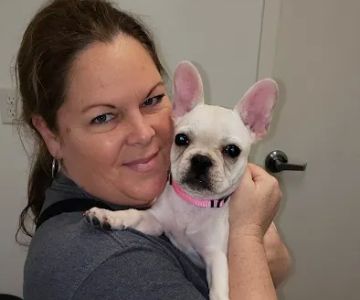How to Care for Your Dog After a Spay/Neuter: A Complete Guide
Spaying or neutering your dog is an important step in their health and well-being. After the procedure, proper care is essential to ensure a smooth recovery and to minimize discomfort. As a dog owner, understanding how to care for your dog after a spay or neuter surgery will help you provide the best care possible. Here, I’ll share essential tips on how to care for your dog after the surgery, including what to expect, recovery steps, and how to make your dog’s healing process more comfortable.
1. Understand the Recovery Process
After the spay or neuter surgery, your dog will need some time to recover. It’s crucial to remember that while this is a routine procedure, your dog may feel groggy or uncomfortable immediately after surgery. Depending on the procedure type, your dog may be able to return home the same day, or they may stay at the veterinary clinic for overnight monitoring.
During the first 24 to 48 hours, expect your dog to rest frequently. They may have an incision that is stitched or stapled, and you’ll need to monitor it for any signs of infection. The recovery process generally takes about 10 to 14 days, but every dog is different, and some may recover faster or slower than others.
2. Keep the Incision Clean and Dry
One of the most important aspects of aftercare is keeping your dog’s incision site clean and dry. During the first week, it’s essential to prevent your dog from licking or chewing the incision, as this can lead to infections or delay healing. To help with this, you may need to use an Elizabethan collar (also known as a cone) to keep them from reaching the surgical site.
Gently check the incision daily for signs of redness, swelling, or discharge. If you notice any of these signs, contact your veterinarian immediately. Clean the area as directed by your vet, and avoid using any harsh chemicals or soaps on the incision unless instructed by the veterinarian.
3. Limit Physical Activity
For the first few days after the procedure, limit your dog’s physical activity. Avoid walking, running, jumping, or any strenuous activities that could put stress on the incision site. This is especially important if your dog has been spayed, as the abdominal muscles are more affected by the surgery.
In the days following the surgery, you can slowly introduce short, gentle walks but keep them at a controlled pace. Over-exerting your dog can lead to complications or prolong the healing process, so make sure to follow your vet’s guidance on when it’s safe to resume normal activity.
4. Monitor for Signs of Infection or Complications
Although rare, infections and other complications can arise after spaying or neutering. It's crucial to be vigilant and monitor your dog closely for any signs of issues, including:
- Excessive redness or swelling at the incision site
- Increased discharge or pus
- Fever or lethargy
- Loss of appetite or vomiting
If your dog exhibits any of these symptoms, it’s essential to consult your veterinarian as soon as possible. Infections or other complications, if not addressed, could extend the recovery time or cause further issues for your dog.
5. Provide a Comfortable Space for Rest
Creating a quiet, comfortable area for your dog to rest is key to the recovery process. Provide a soft bed or blanket, away from other pets or distractions, to help them feel safe and relaxed. Avoid placing your dog on hard floors, as soft surfaces will prevent unnecessary pressure on the surgical site.
Ensure that your dog has access to clean water and food, but keep meals light in the first few days. This will help your dog stay hydrated and nourished while their body heals. Be patient if they are not eating as much in the beginning—it’s common for dogs to have a reduced appetite after surgery.
6. Administer Medications as Prescribed
Your veterinarian will likely prescribe pain medications or antibiotics to prevent infection and help manage any discomfort after surgery. Make sure you follow the veterinarian’s instructions carefully, giving your dog the right dosage at the prescribed times. Never skip a dose or administer human medications, as they can be toxic to dogs.
Some dogs may be sensitive to medications, so be on the lookout for any signs of side effects, such as vomiting or diarrhea. If any adverse reactions occur, contact your veterinarian immediately.
7. Revisit the Veterinarian for Follow-Up
Depending on your dog’s recovery, your veterinarian may schedule a follow-up appointment to check the incision and overall healing progress. This is an excellent opportunity to ask any lingering questions you may have about your dog’s recovery or the next steps for care.
Follow-up visits also allow the veterinarian to remove stitches (if necessary) and ensure that everything is healing properly. It’s important to keep these appointments to ensure the best possible outcome for your dog’s health.
Why Proper Aftercare Matters
Proper care after a spay or neuter surgery is crucial not only for the healing process but also for your dog’s overall well-being. By ensuring that your dog’s recovery is smooth and stress-free, you are setting them up for a healthy, happy future. Remember that every dog heals at their own pace, and it’s essential to be patient and attentive during this time.
As a responsible pet owner, you can trust that providing the best care after surgery will make a huge difference in your dog’s long-term health. Don’t hesitate to reach out to your veterinarian if you ever have any concerns or need advice on your dog’s recovery.
At Hidden Brook Veterinary, we are dedicated to helping you navigate the recovery process and ensuring your dog’s health remains a top priority. If you need any guidance or professional assistance during your dog’s recovery, don’t hesitate to contact us for the best recommendations and services.











